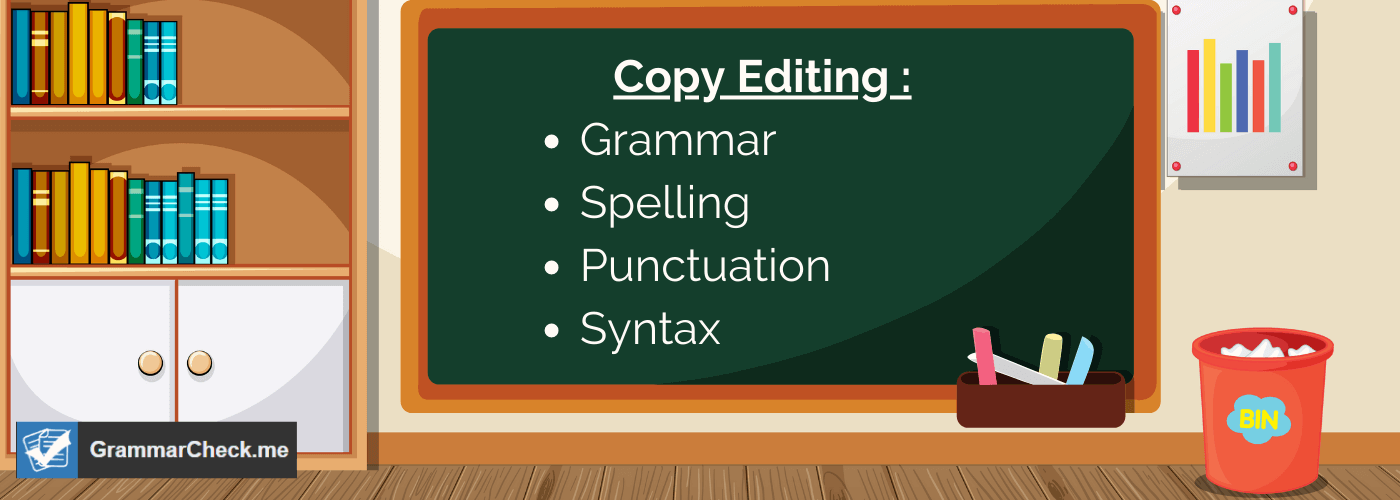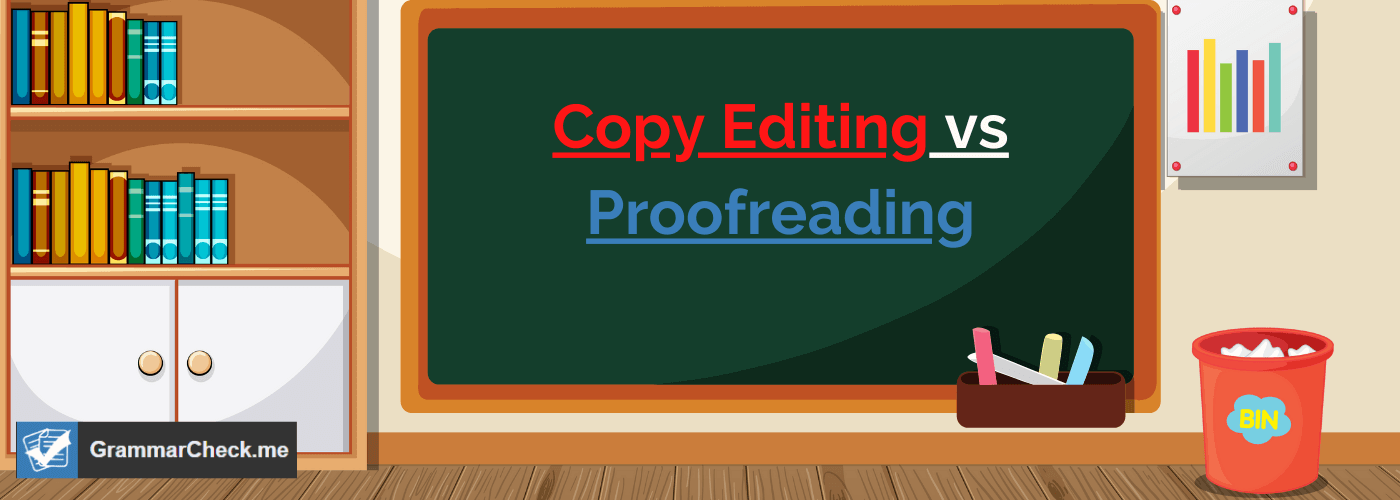Proofreading and copy editing are both important steps in the publishing process that you need to master. However, they’re not the same thing. In this article, we’ll explore the differences between these two terms, and explain why you should use both of them to produce high-quality content.
Always using the right words? Make sure:
Check Your TextDefine Copy Editing

We have already answered the question, why is editing important? Copy editing is the process of reviewing and correcting errors in descriptive and prescriptive grammar, spelling, punctuation, and syntax.
It is also concerned with ensuring that the text flows smoothly and is easy to read. In addition, copy editors will often check for consistency in style and formatting. The goal of copy editing is to produce clean, error-free text that is ready for publication.
Takeaway: Copy editing is often confused with proofreading, which is the final step in the publication process.
Define Proofreading
Proofreading is all about fixing typos missed during the final copy edit. This may seem simple, but is a very important task. If you’re interested, check out our proofreading academy reviews to see how you can even make a living as a proofreader!
Typos can be distracting to the readers and even change the meaning of what you’re trying to say. Plus, they can make you look sloppy and unprofessional. This is the very last step in the publication process.
Many people utilize a proofreading checklist to ensure they catch all grammatical errors.
Takeaway: Proofreading is your last chance to catch any missed typos before your work gets published.
What’s The Difference?
Although both copy editing and proofreading happen at the end of the publishing process, they are not the same.

In the traditional publishing process, copy editing comes first. The copy editor’s job consists of:
- Revising a piece of writing for grammar, style, and clarity
- Make minor changes to the text, such as correcting spelling errors (such as openned or opened) and ensuring that sentences are properly constructed.
- Suggest ways to improve the overall flow of the piece.
- Help ensure writing is error-free and easy to read
The final step is the proofreading stage. Professional proofreading consists of:
- Reviewing the final draft
- Corrects errors the copy editor missed
- Final check for correct vocabulary, grammatical rules, and factually incorrect statements
Takeaway: A proofreader and copy editor’s jobs are not the same. Proofreading catches any mistakes the copy editor may have missed.
What Are Proofreading Symbols?
Proofreading symbols are a collection of different marks that indicate corrections or changes that need to be made in document. Here are some of the most common proofreading symbols:
- Delete: The symbol for deletion is a simple line through the text to be removed.
- Insert: The symbol for insertion is a caret (^) indicating where the text should be added.
- Transpose: The symbol for transposition is a zigzag arrow indicating that two adjacent letters or words should be switched.
Do you need copy editing and proofreading services?
If you’re wondering whether you need copy editing and proofreading services, the answer is probably yes.
As a best practice…use both services when creating any kind of written content, whether it’s for a
- Research Paper
- Blog
- Short Story
- Or even just a social media post
Using both services helps to ensure that your content is of the highest quality and that it will make the best possible impression on your readers. Now get out there and find a high-quality copy editor and proofreader. I also recommend using the Chegg plagiarism check tool to ensure your work is unique.
Takeaway: If your budget permits…use both a copy editor and professional proofreader!
Levels Of Editing
There are two major levels of the editing process: substantive & mechanical editing.
1) Substantive Editing
Substantive editing is concerned with high-level issues. This includes:
- Writing structure
- Writing organization
- Check for clarity of the argument
- Check overall tone and writing style
- Change the content of a manuscript, such as adding or deleting scenes or characters
For example, you might have to make the right word choice between to cute or too cute. In summary, substantive editing is about making sure your writing is ready to be published. So next time you see someone talking about substantive editing, now you know what they’re talking about!
2) Mechanical Editing
Mechanical editing covers both copy editing and proofreading, and is the process of ensuring that a piece of writing is free of errors.
- First, copy editors check for grammar, spelling (such as Brazilian vs Brasillian), and punctuation mistakes.
- Then, proofreaders look for any remaining errors, as well as make sure that the layout is correct and that there are no typos.
Mechanical editing is the final step in the editing process. For small pieces of writing, such as a poem, you may skip substantive writing altogether.
Developmental Editing vs Line Editing
Developmental editing and line editing are two different types of edits that authors can choose to undergo. This type of editing is especially important to acing the Grammar SAT section!
- A developmental editor focuses on the big picture, such as the plot, pacing, and characters.
- A line editor considers word choice and sentence structure to improve the overall flow of the writing.
Takeaway: Both developmental and line editors are useful!
FAQs – Copy Editing vs Proofreading
Copy editing comes first. Proofreading is the step of checking a text for errors and inconsistencies after copy editing. Copy editors are responsible for the overall clarity and style of a text, while proofreaders are responsible for catching errors in grammar, typographical mistakes, formatting errors, and spelling that may have been missed. Proofreading is the final edit.
No, copy editing does not include proofreading. They are two different things. Copy editing is the process of reviewing and correcting your writing for grammatical errors, punctuation errors, spelling errors, and more. Proofreading is the final step in the editing process. It involves checking the text for any remaining errors before it is published or printed.
Copy editing is the process of reviewing and revising a document to improve its accuracy, clarity, and consistency. A copy editor will catch all the spelling mistakes, continuity errors, punctuation mistakes, and grammar errors that the author missed. This is an important step in producing a high-quality finished product.
Both a copy editor and a proofreader are important for producing a high-quality document, but they are not the same thing. A copyeditor verifies that there are no mistakes that can interfere with the readability of your document, while a proofreader should be used to catch errors missed by the professional copyeditor. Modern freelance proofreading is the final step in the editing process. Self-publishing authors should take extra care in the review process.
The Bottom Line
So there you have it—proofreading is the final step in the editing process that catches all of the mistakes that were missed by the copy editor. This is an important step, as catching errors at this stage can save you from embarrassment and improve your writing. Now that you know the difference between copy editing and proofreading, be sure to put each step into action in your writing.
